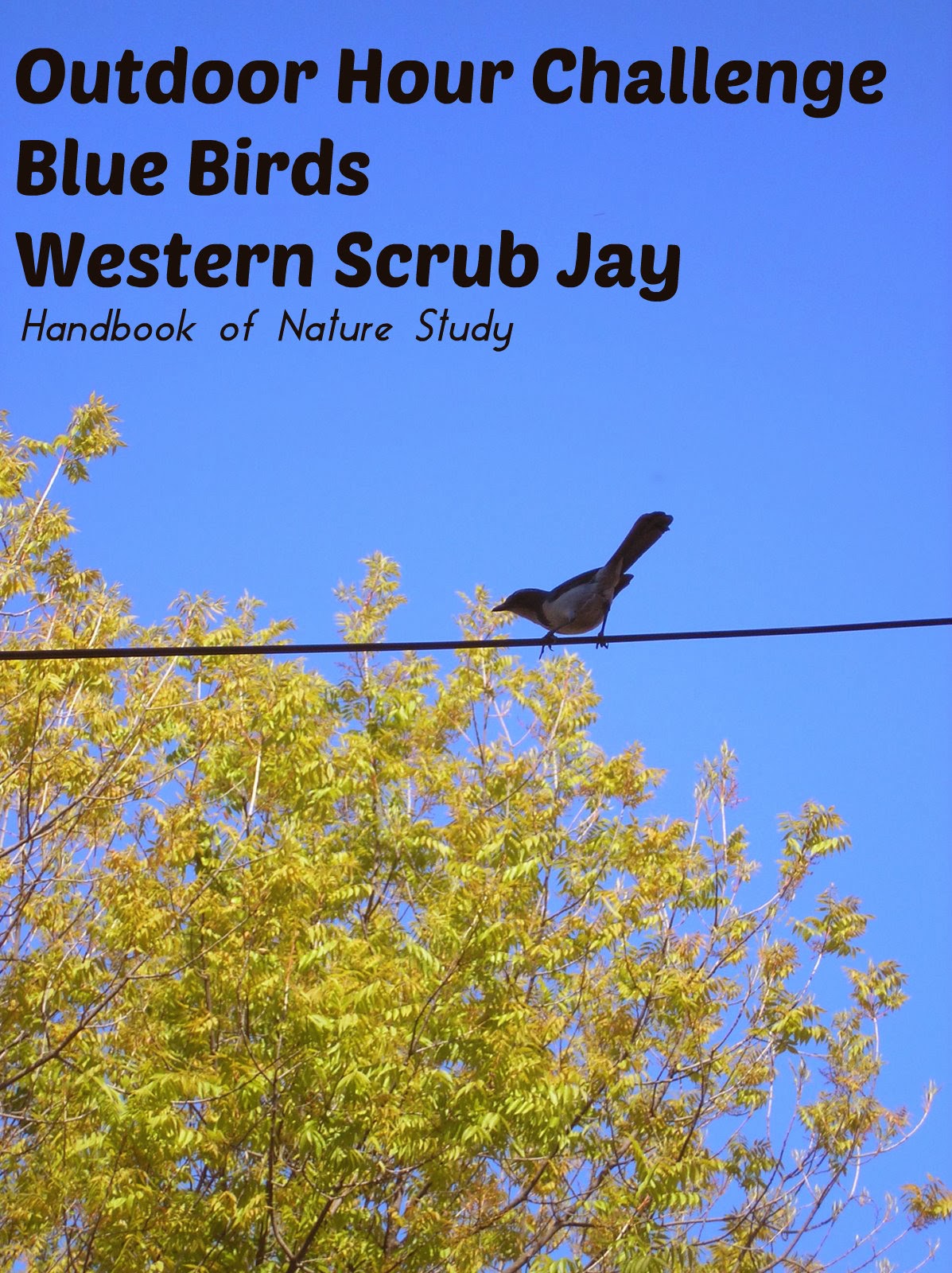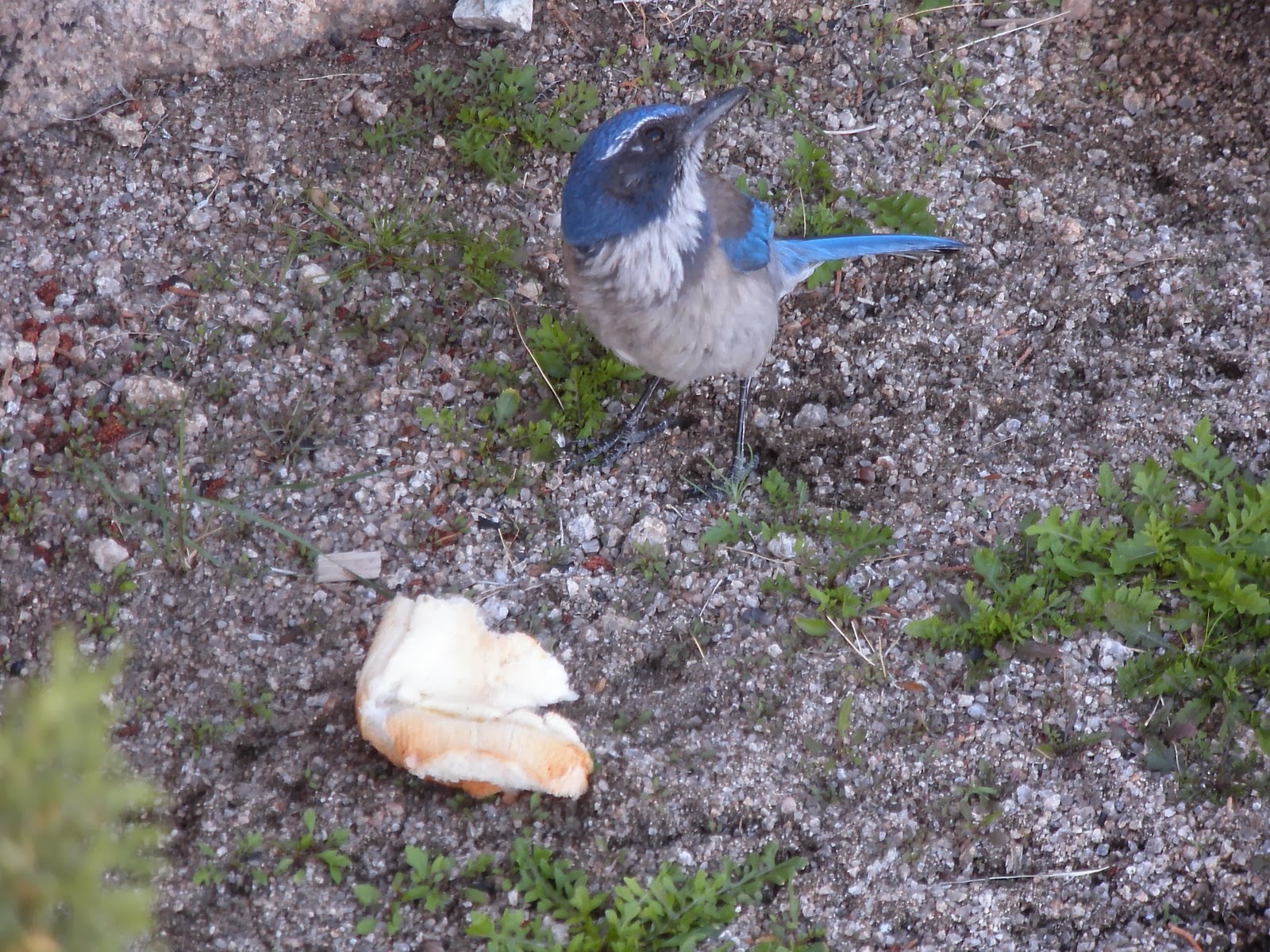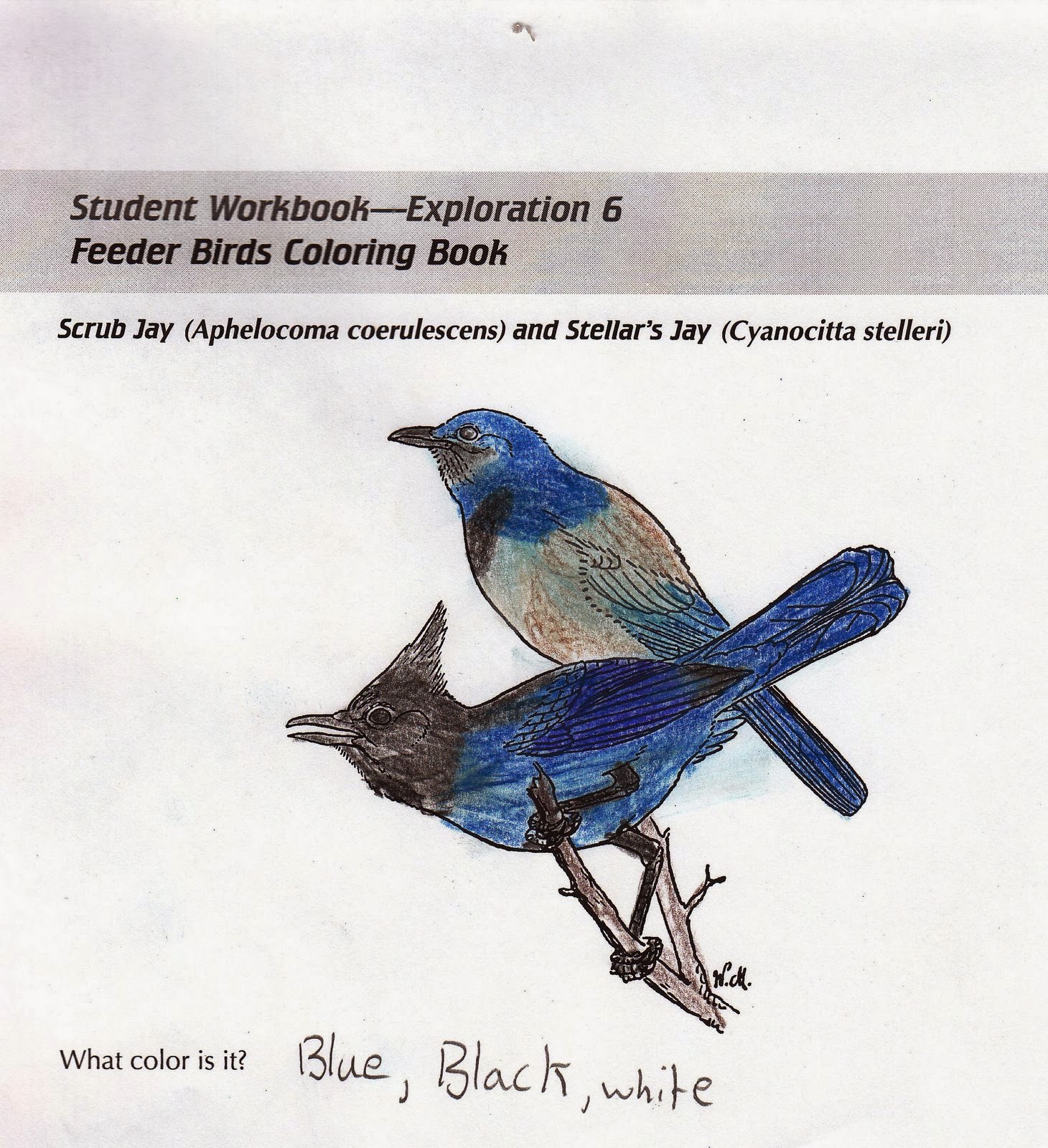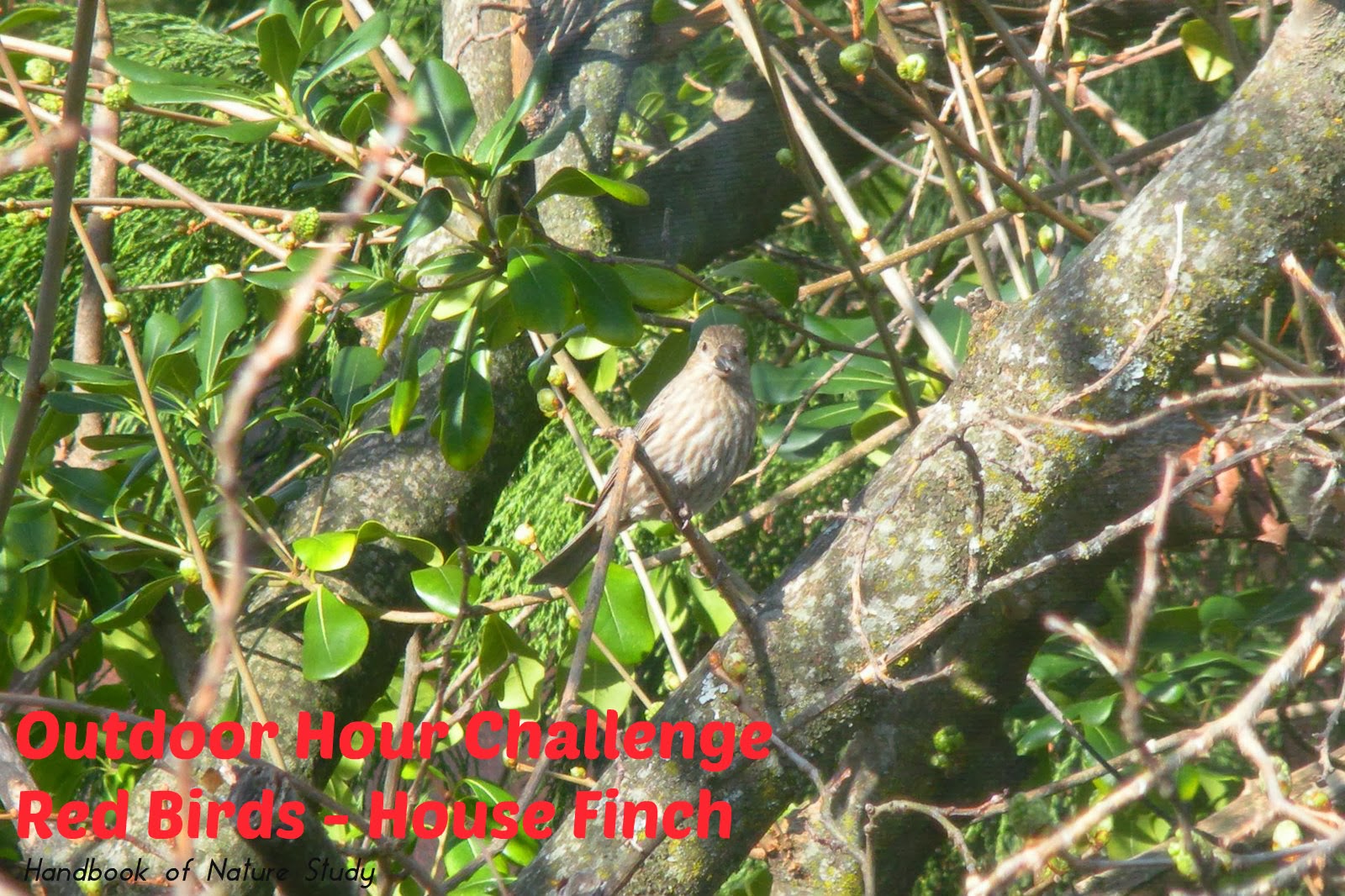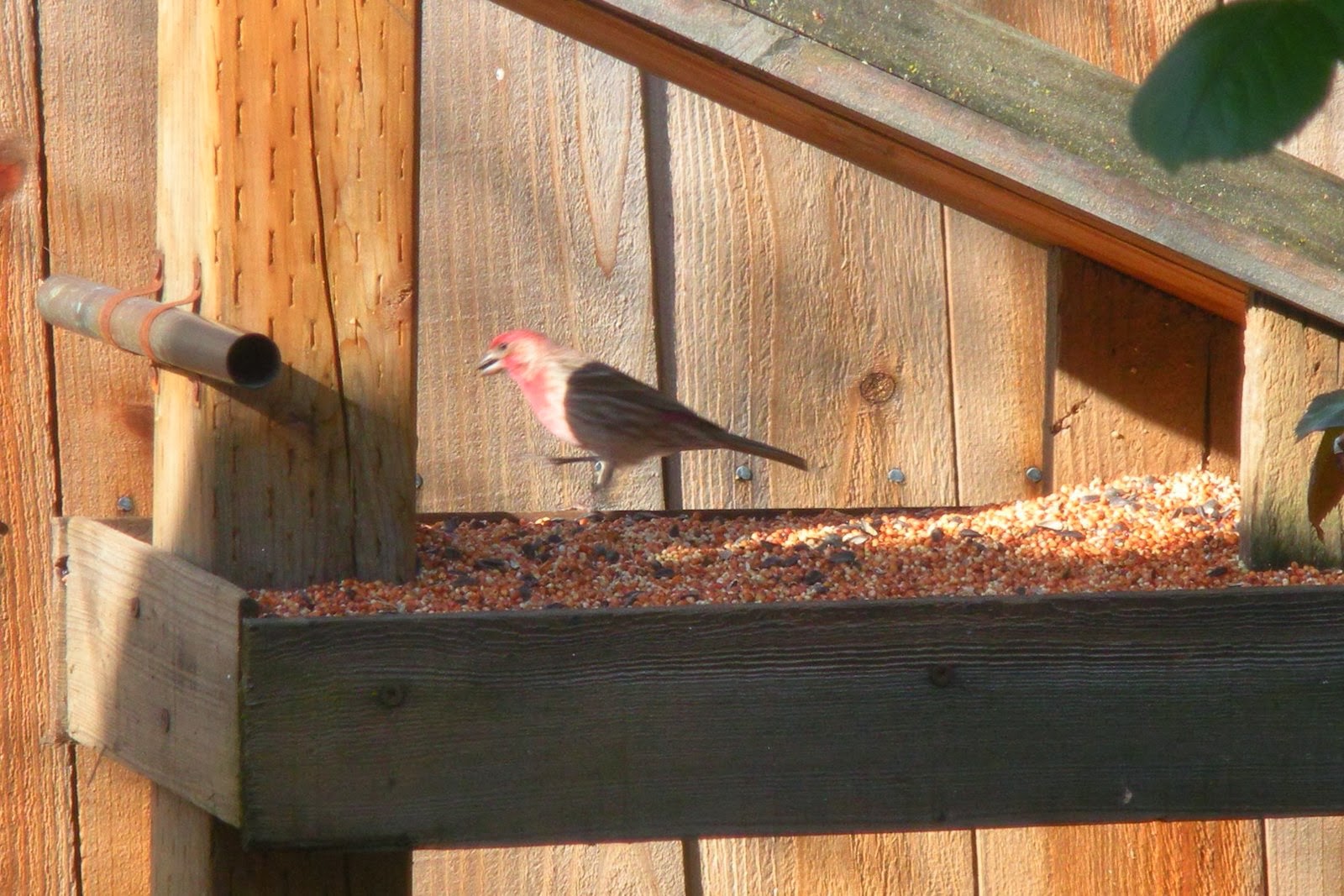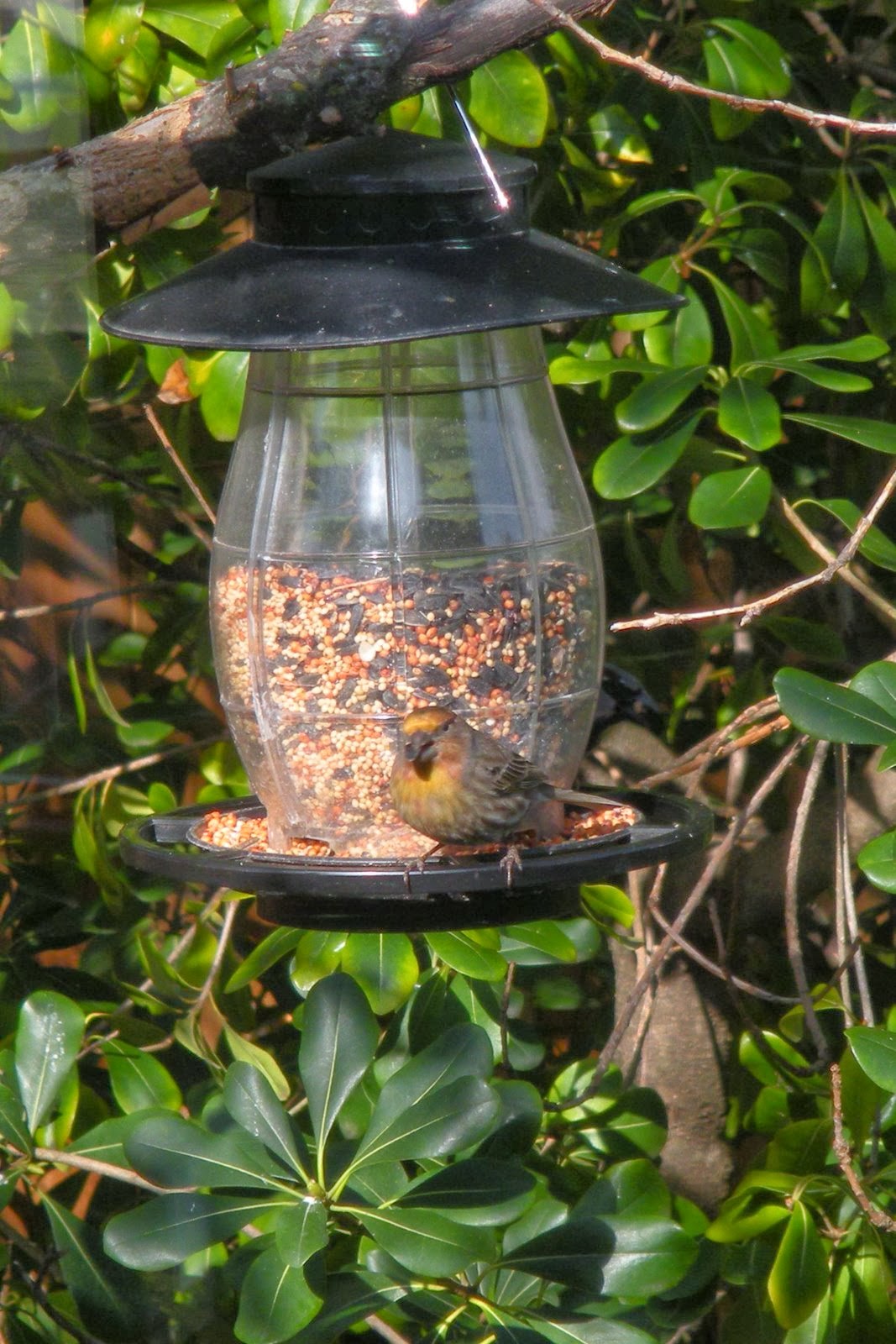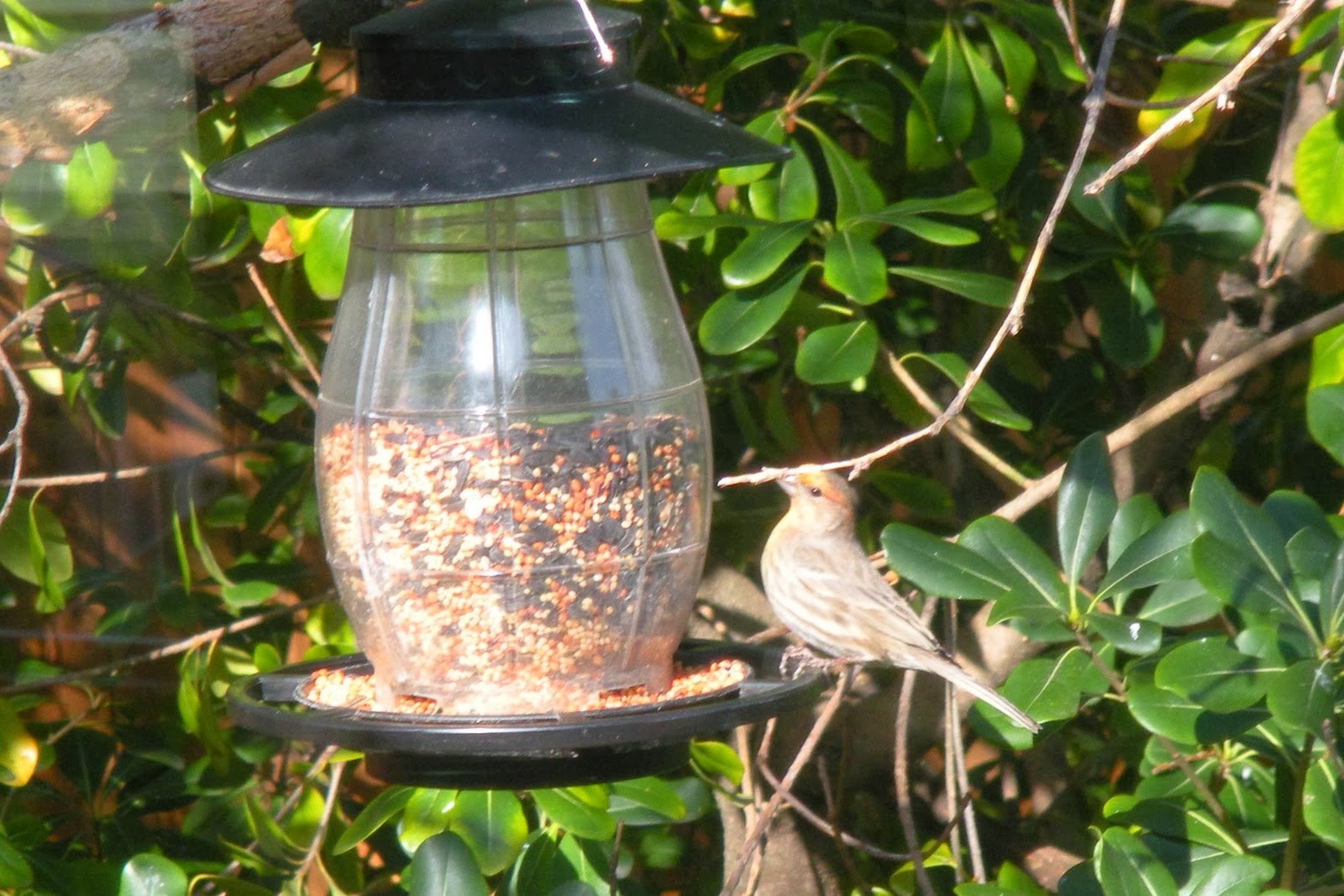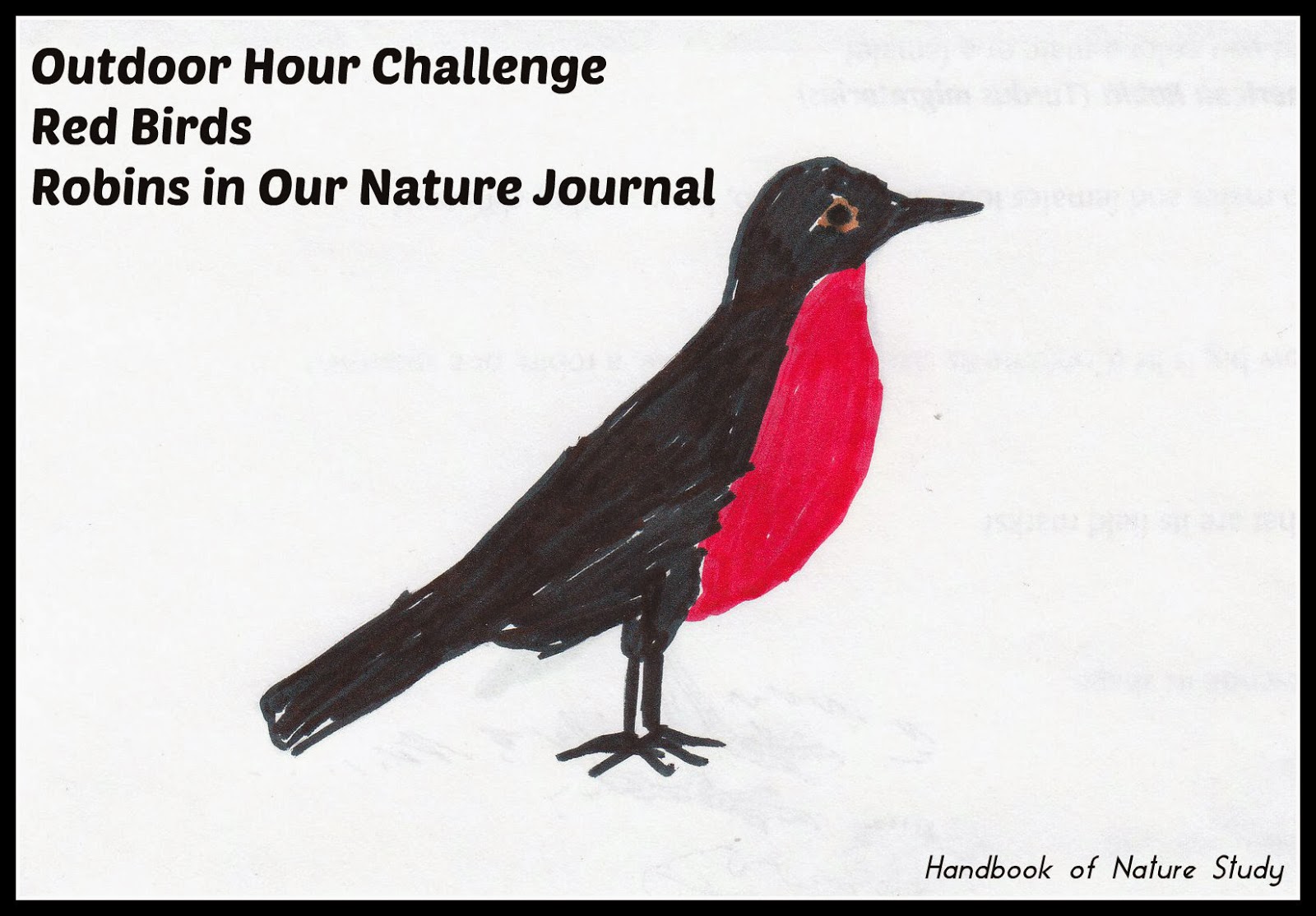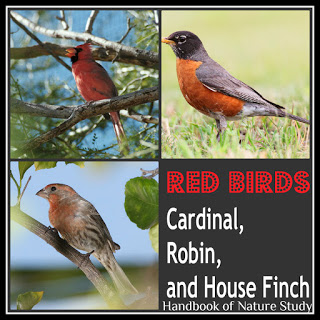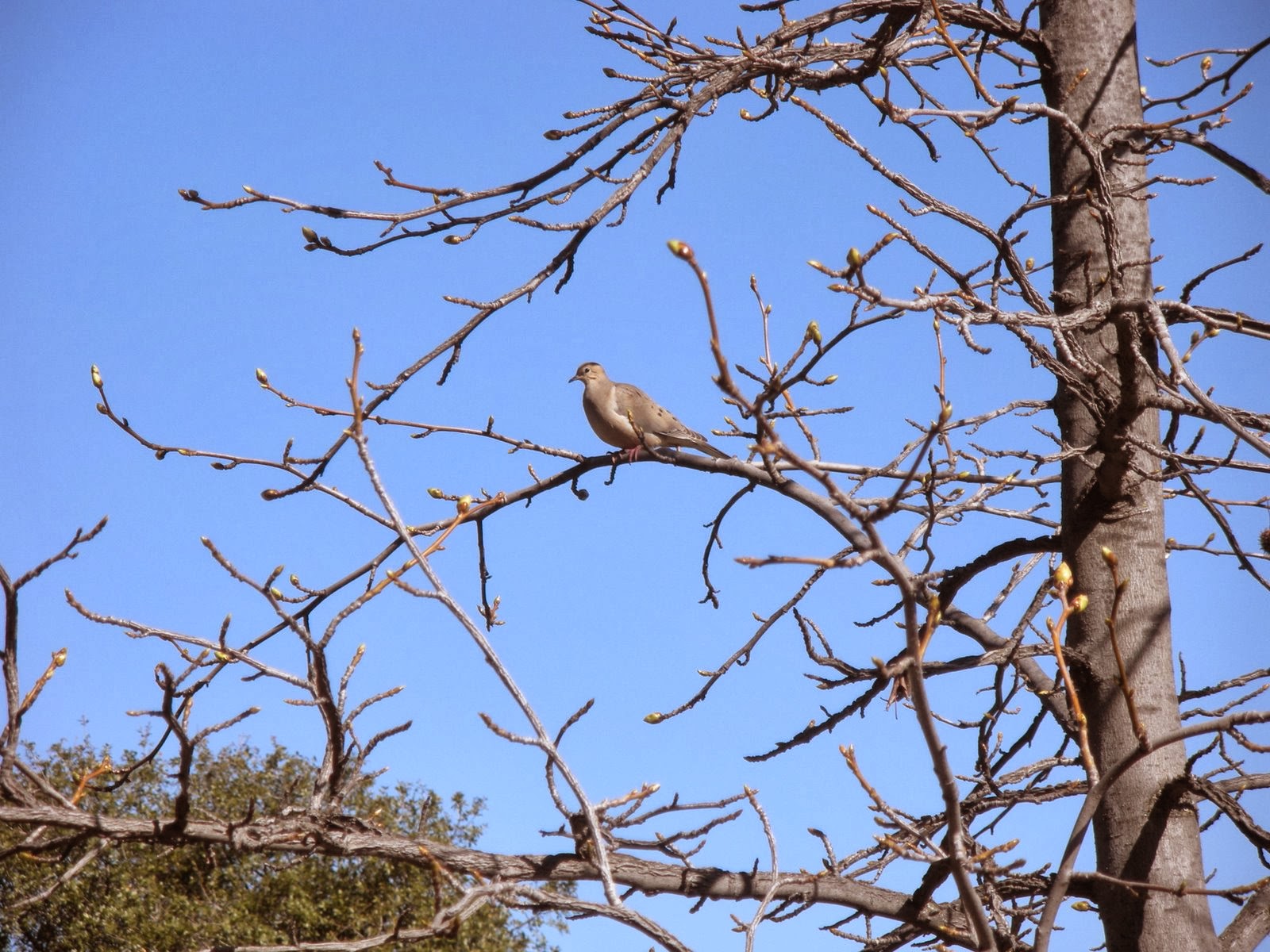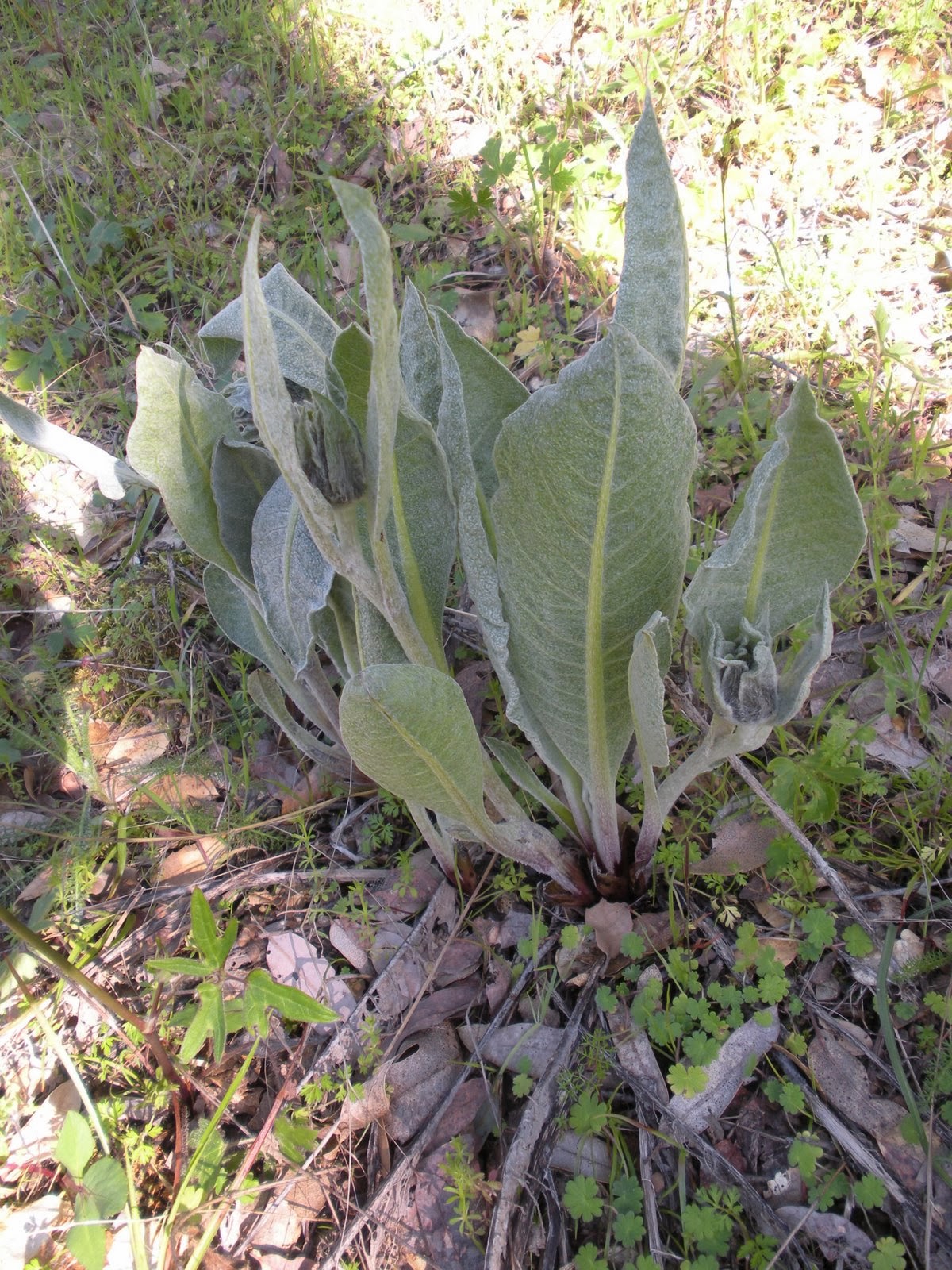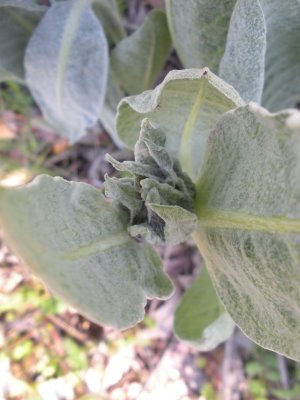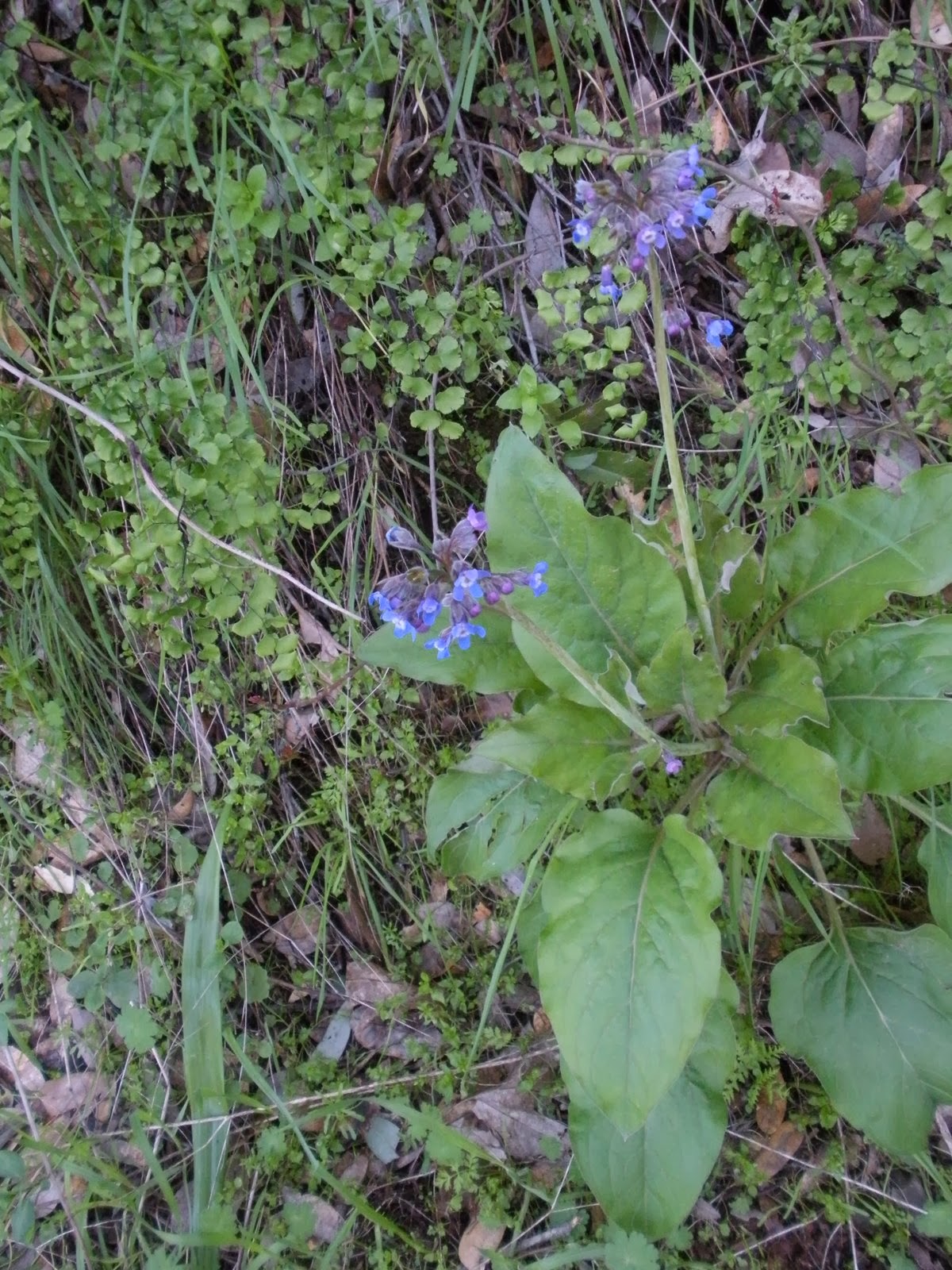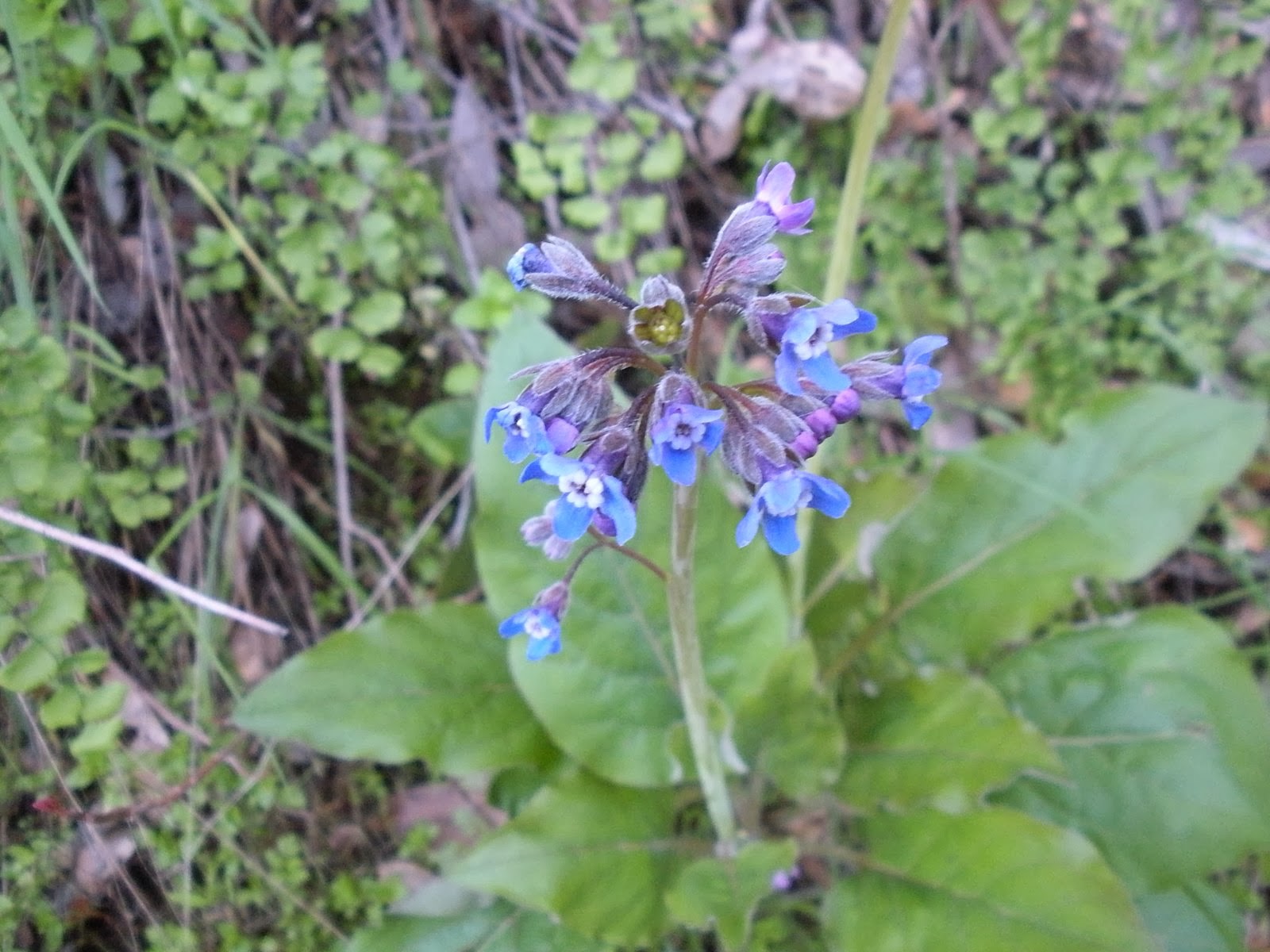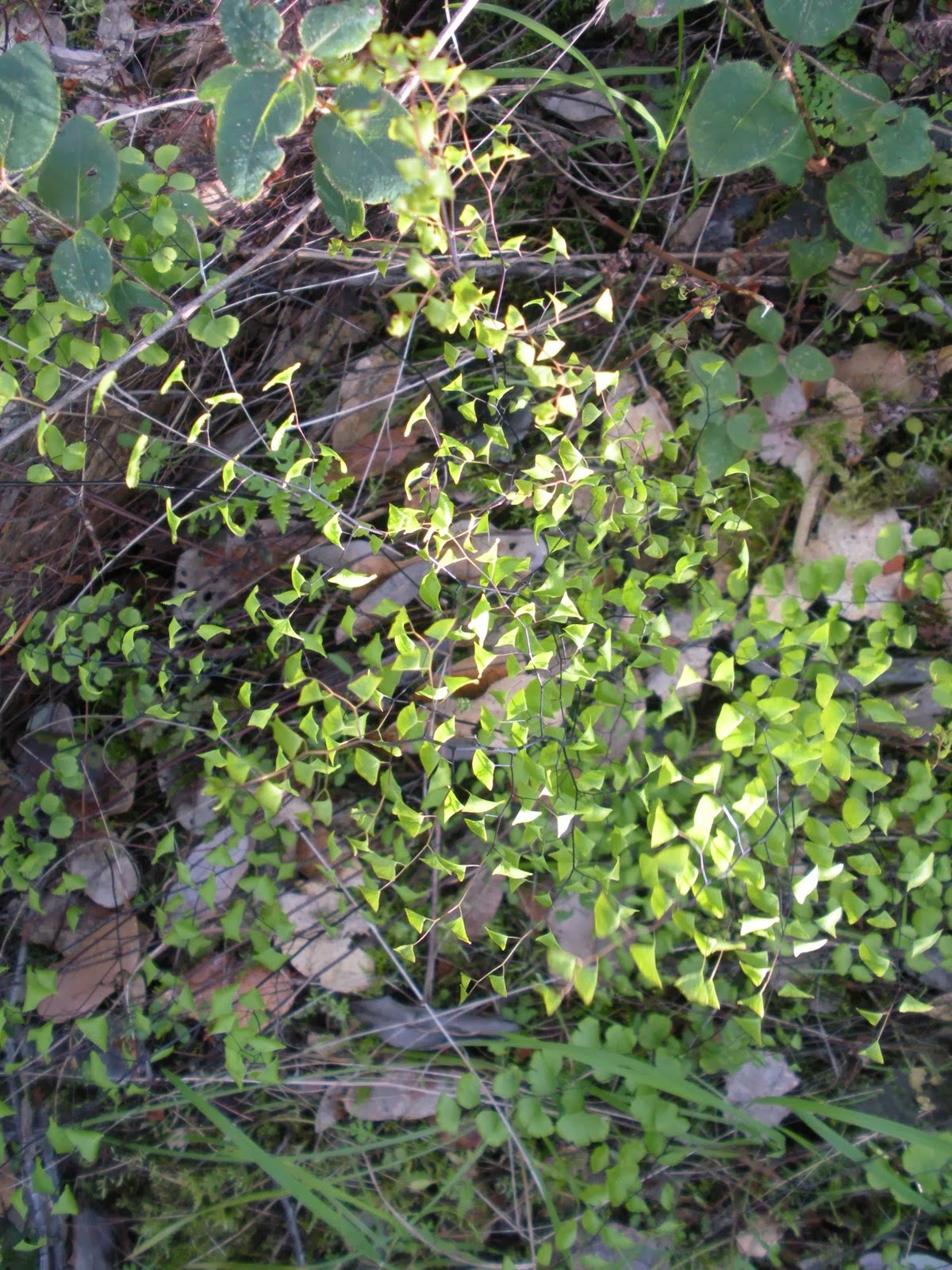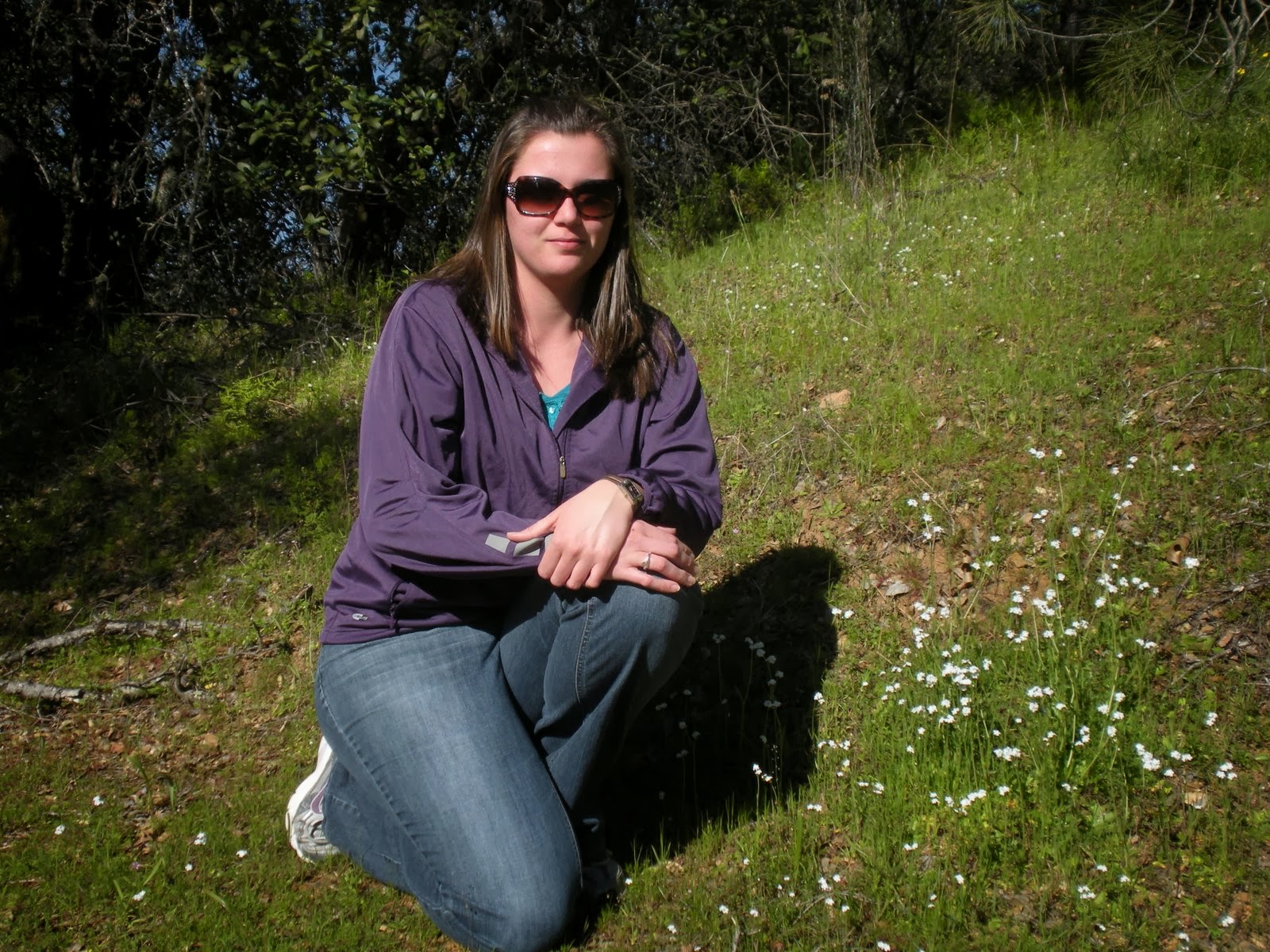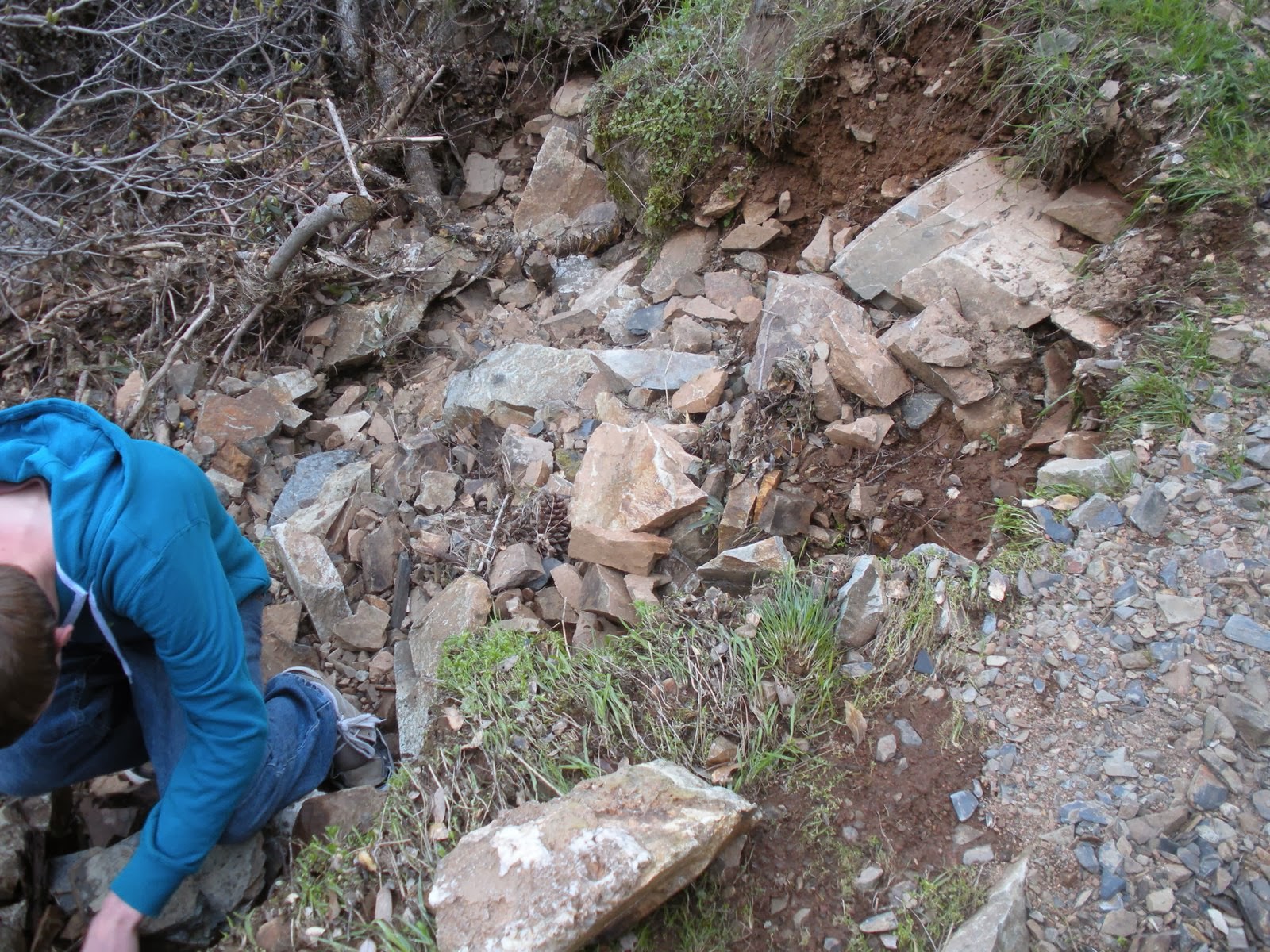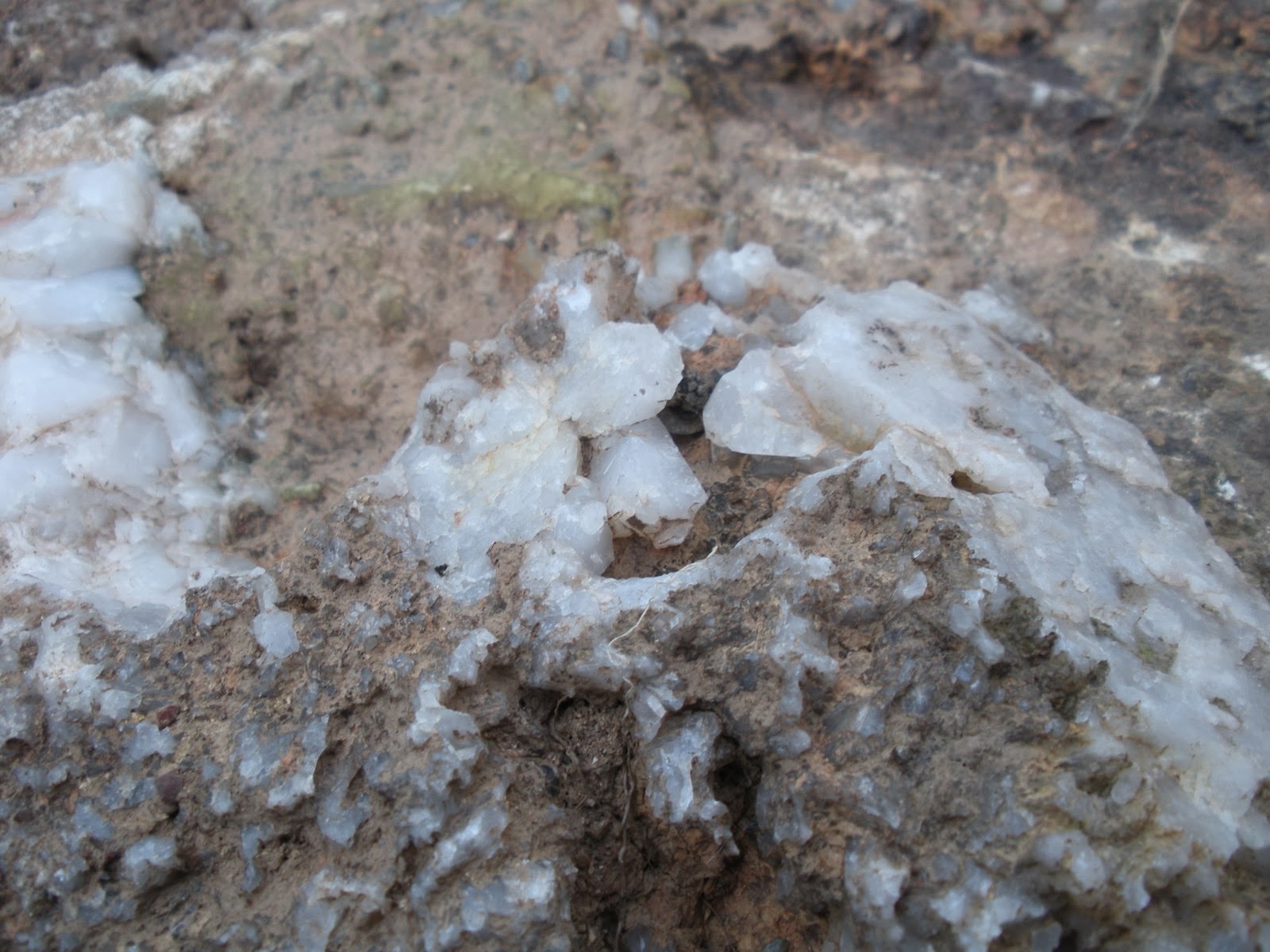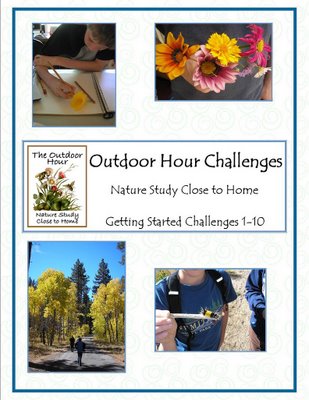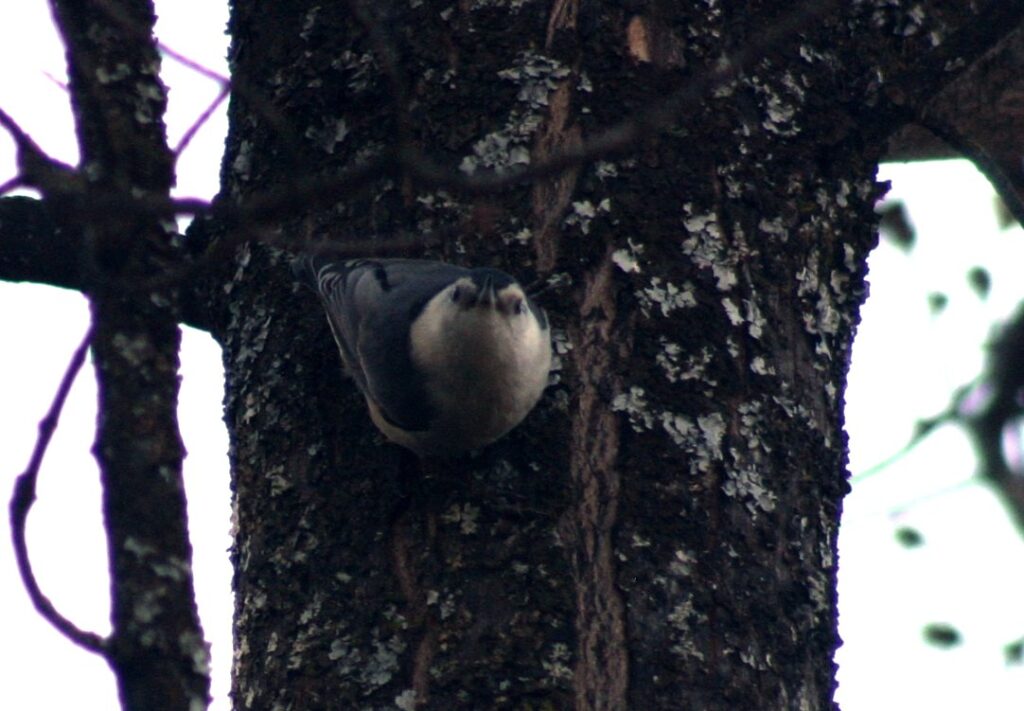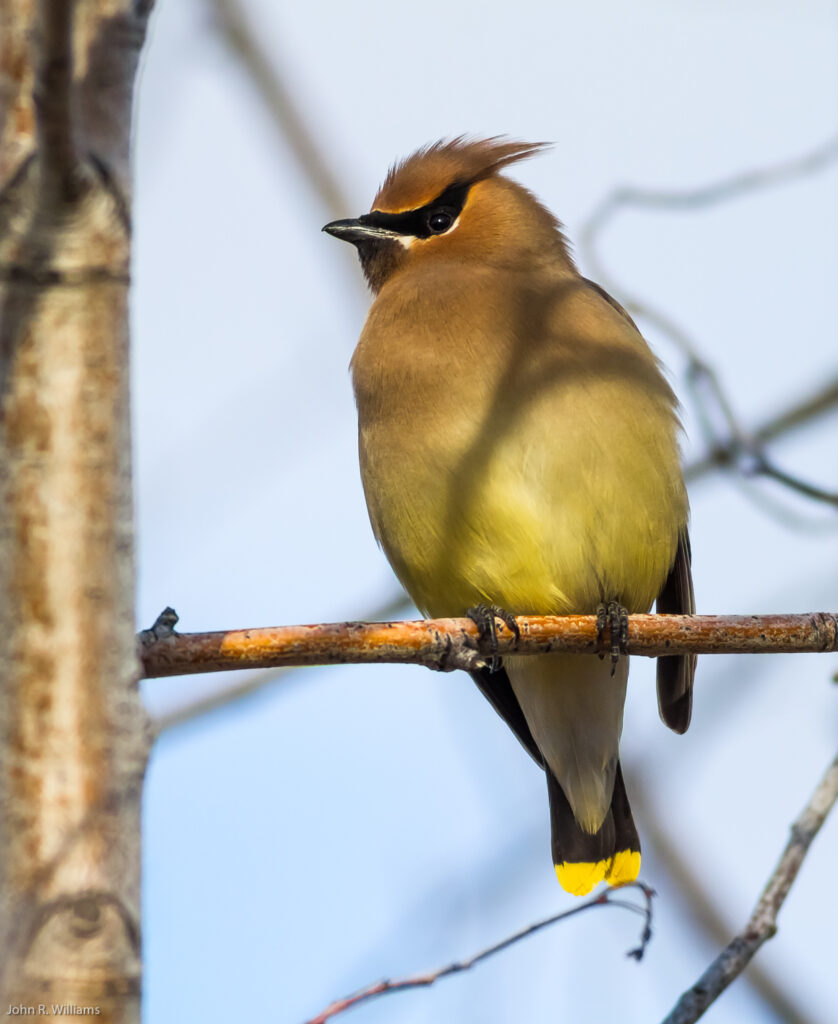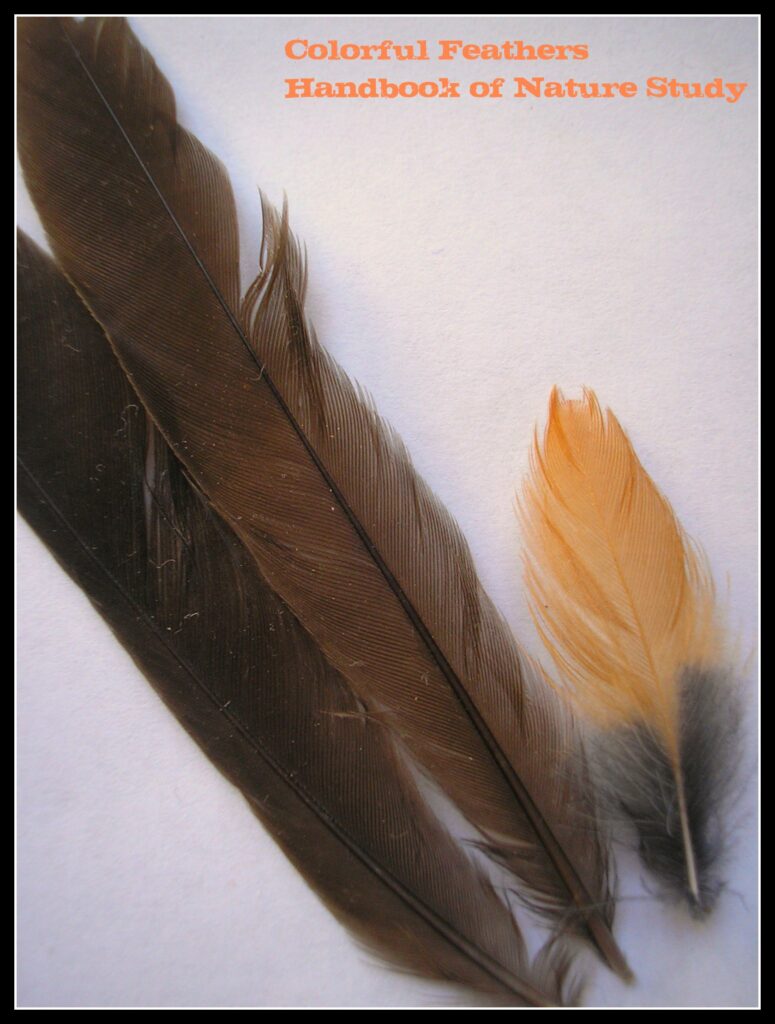For the most part these are pesky birds, chasing other little birds out of our feeders. They also are very noisy and their voice is more like a squawk than a song. 🙂
We often put out peanuts on our deck railing for them in the winter and they rally around and gather them up and store them in little holes in the garden. They do the same thing with walnuts and acorns so often times we find little walnut trees and oaks growing in our potted plants and in our flower beds.
They can be carnivorous as well. We had a dead skink in our backyard last year that we were observing and before we knew it, a scrub-jay swooped down and flew away with it. We saw him sitting on top of our neighbors roof pecking away at its snack. (I referenced the link to the entry that tells that story below.)
Last spring we had a nest of baby scrub-jays that we could observe from a bedroom window. We watched the babies as they hatched and then as they started to stick up their open beaks for mama and daddy to put something into it to eat. They were quite helpless. Here is an entry with a couple of photos: Scrub-jay nest. My son was able to get the above close-up of the baby Scrub-jay as it perched in the bushes in our front yard. Click the photo to get a good look at the baby feathers on his belly.
We have watched mama Scrub-jay teach her baby to fly in our front yard. It was painful to watch but the baby did eventually fly away after much coaxing from mama and papa. Here is the baby when it was learning to fly. It could sort of flap from the tree to the bush but then it was afraid to go anywhere else. The mama would fly back and forth in an attempt to demonstrate how to fly.
Look at that beak! We know why he has such a big pointy beak….he uses it to eat and peck and dig.
Here is a scrub-jay in the Mojave dessert. We were having a picnic and he flew down and grabbed my son’s sandwich roll and then he flew away with it….he stopped here and was pecking at the bread.
We also live where there are Steller’s jays and they are much more majestic in appearance than the scrub-jays. They have a crest on their heads and are a deeper, richer blue overall. They too are little pests. You can not have a picnic without one trying to grab something from your plate. They can be quite aggressive. They are very common in Yosemite National Park and you know the minute you open your picnic basket that they will come flying it to check out your selection.
Here is a video I shared before of a white-headed woodpecker in the forest. That is interesting enough but for this entry you might want to watch and see at about 1:00 the Steller’s jay that joins our picnic. I had put a couple of Cheez-its on the ground for him and he perches in the tree and cocks his head to look at us. Listen to the sound of his wings as he flies down to the ground to pick up the cracker. This is typical Steller’s jay behavior at a picnic. Bold and brave.
We do have Western bluebirds in our yard occasionally but not enough to really good a good look at them. We have observed their nesting and protecting behavior one time when we were out on a country road and there were some nesting boxes along the fence. It was spectacular to observe and their colors were brilliantly blue.
Scrub-jays are some of our favorite bird nature study subjects…..

